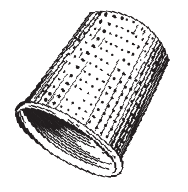He doesn’t do the work himself,
he explains on the phone—
it’s just become too much.
So, he comes out for a flat fee of $150
to assess the arboreal situation
and advise on future action
or inaction. This big one has some
dead limbs that could use pruning,
that one is underwatered
and would do best with less competition—
consider clearing out this bed
of vines and mulching it over.
How worried should we be
about the big one falling?
About our house, our neighbors’?
And he tells us something it seems
we should all have learned long ago—
that trees die from the inside out,
the inner trunk of ours likely long
past its prime, but the outer rings
and bark still slurping up survival,
growing the glorious greens
that turn an improbable gold
in the sun’s generous glow.
The mosaic of leaves above
flashes the faces of the fallen—
those who left after forty, fifty,
even ninety-five years of verticality,
flesh uprooted with more or less warning,
leaving their big absence in the sky…
The long-sleeved, khakied man,
who once swung from the high
branches himself but now keeps
his feet planted in the earth—
the trees still surprise him
with how long they can stand
against the wind and rain,
the drought and drudgery
of a planet peeled of its plenty.
There are trees still standing
that I thought would
drop decades ago—
layers of heartwood lingering
so much longer than
our own lifespans can absorb.
The Tree Guy

Genevieve Creedon is a scholar, poet, and essayist. She earned her M.F.A. in Creative Writing from the University of Southern Maine’s Stonecoast MFA Program and her Ph.D. in Comparative Literature from the University of Michigan. Her writing across genres focuses on the wonders and mysteries of earthly life. Her work appears in About Place, Big City Lit, Cider Press Review, Narrative Northeast, Plainsongs, and Westchester Review, among others.

